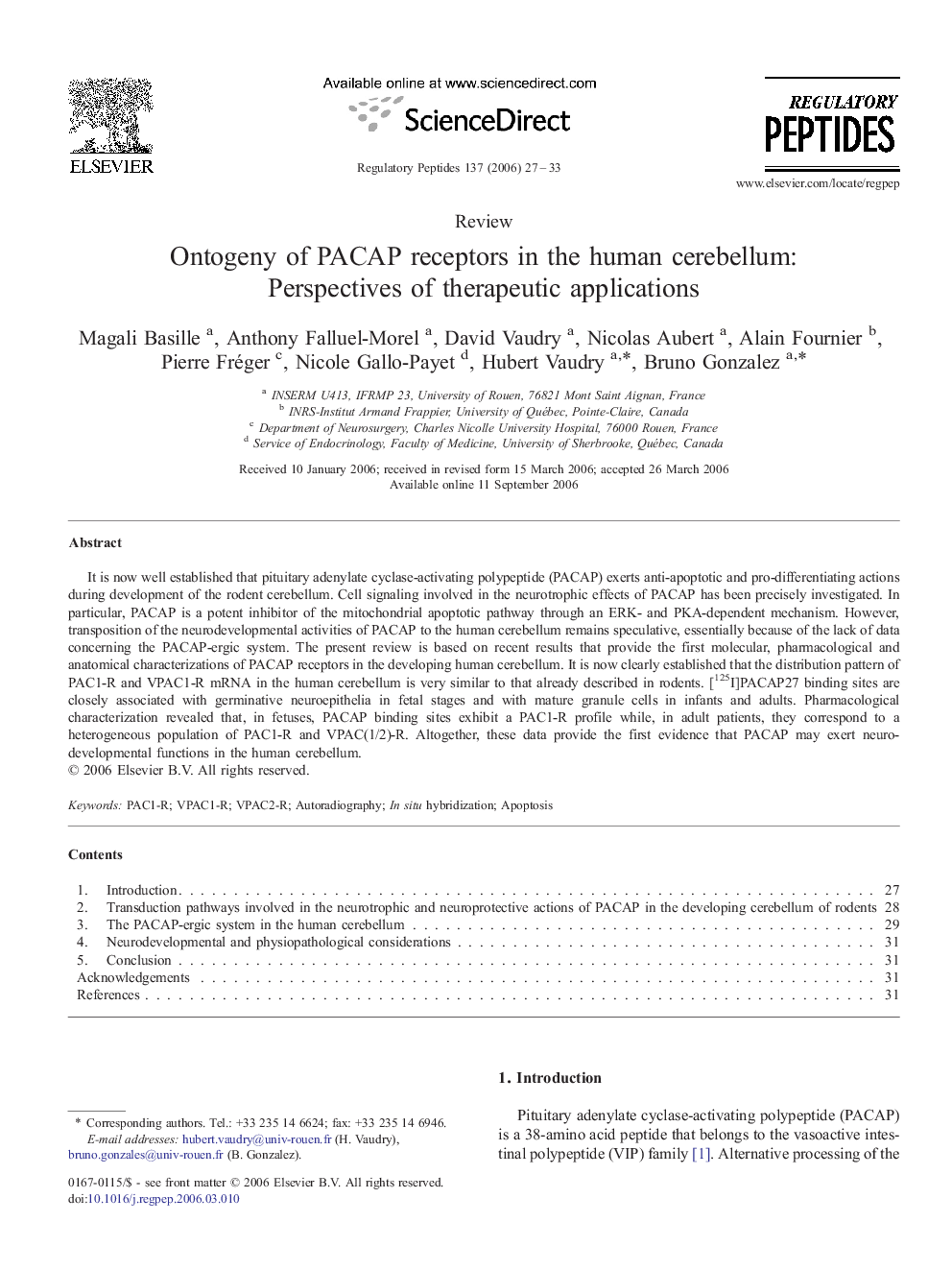| Article ID | Journal | Published Year | Pages | File Type |
|---|---|---|---|---|
| 2023549 | Regulatory Peptides | 2006 | 7 Pages |
Abstract
It is now well established that pituitary adenylate cyclase-activating polypeptide (PACAP) exerts anti-apoptotic and pro-differentiating actions during development of the rodent cerebellum. Cell signaling involved in the neurotrophic effects of PACAP has been precisely investigated. In particular, PACAP is a potent inhibitor of the mitochondrial apoptotic pathway through an ERK- and PKA-dependent mechanism. However, transposition of the neurodevelopmental activities of PACAP to the human cerebellum remains speculative, essentially because of the lack of data concerning the PACAP-ergic system. The present review is based on recent results that provide the first molecular, pharmacological and anatomical characterizations of PACAP receptors in the developing human cerebellum. It is now clearly established that the distribution pattern of PAC1-R and VPAC1-R mRNA in the human cerebellum is very similar to that already described in rodents. [125I]PACAP27 binding sites are closely associated with germinative neuroepithelia in fetal stages and with mature granule cells in infants and adults. Pharmacological characterization revealed that, in fetuses, PACAP binding sites exhibit a PAC1-R profile while, in adult patients, they correspond to a heterogeneous population of PAC1-R and VPAC(1/2)-R. Altogether, these data provide the first evidence that PACAP may exert neurodevelopmental functions in the human cerebellum.
Related Topics
Life Sciences
Biochemistry, Genetics and Molecular Biology
Biochemistry
Authors
Magali Basille, Anthony Falluel-Morel, David Vaudry, Nicolas Aubert, Alain Fournier, Pierre Fréger, Nicole Gallo-Payet, Hubert Vaudry, Bruno Gonzalez,
